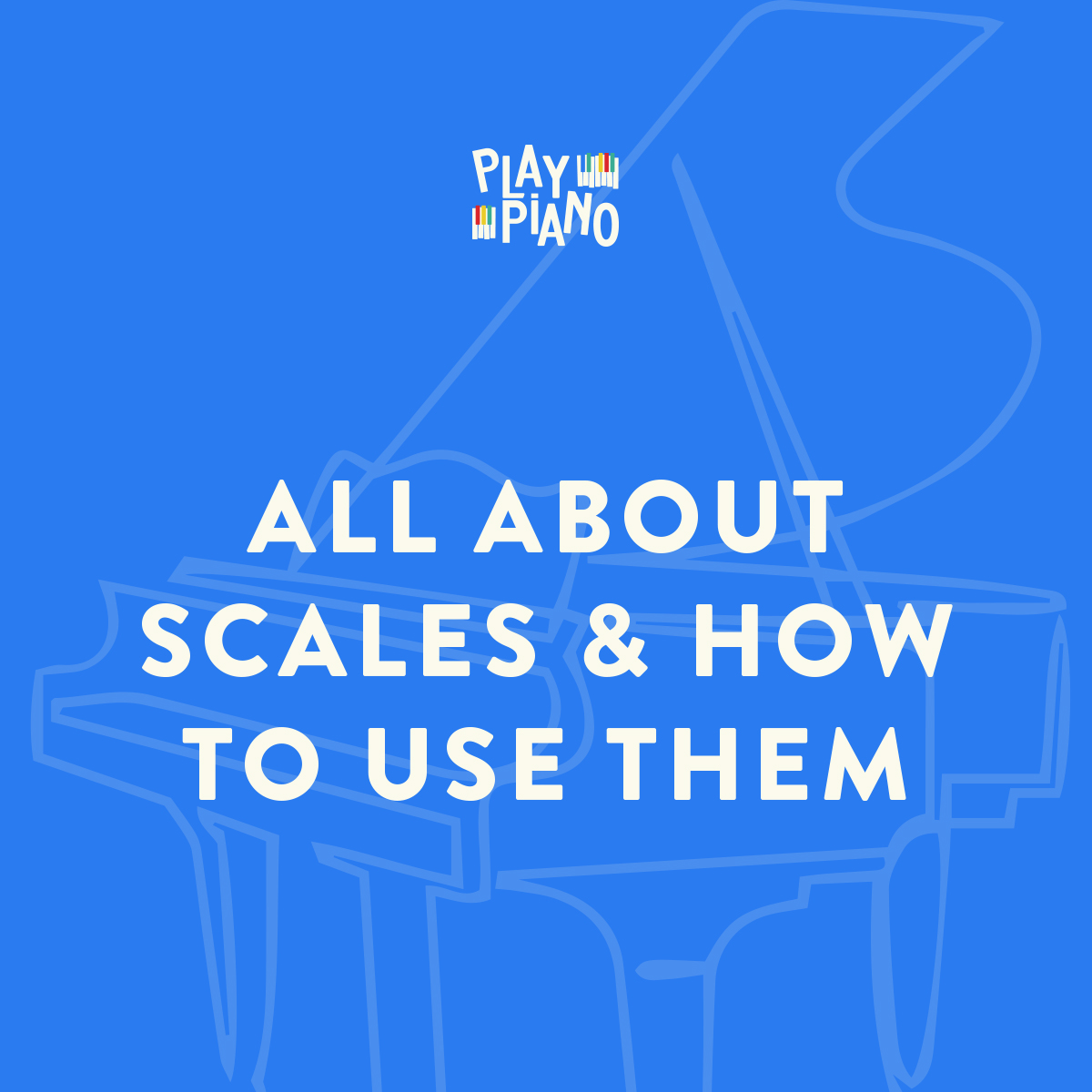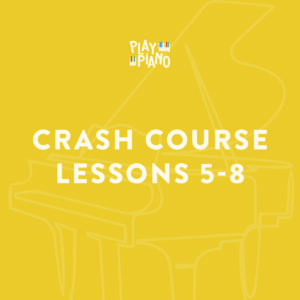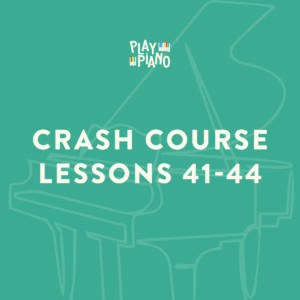Description
The word “scale” comes from the Latin word “la scala” which means “ladder.”
So a scale is a ladder of notes that start on the bottom rung and works it’s way up 8 notes to the octave note — from the word “octavo” — which means 8, like octagon, octopus, October (I know — October is the 10th month for us, but Caesar shifted the start of the year from March 1 to January 1, so October became the 10th month instead of the 8th), etc.
Scale notes are named by the distance from the root of the scale. For example, in the C major scale C is the root (home base), D is the 2nd degree, E is the 3rd degree, and so on up to the octave note.
Look at your piano keyboard and you’ll see half steps (the closest possible keys, like C and C#) and whole steps (2 half steps, like C and D). The distance between a while key and it’s neighboring black key is always a half step, because you can squeeze nothing between them except dust. The distance between two white keys is almost always a whole step, because you are skipping a black key. But not always: the distance between E and F is a half step, because nothing lies between them. Same with B and C — nothing lies between them. The distance between two black keys is almost always a whole step, except between Eb and Gb which is a step-and-a-half, and also between Bb and Db, which is likewise a step-and-a-half.
The formula for a major scale is: whole step, whole step, half step, whole step, whole step, whole step, half step.
Once you know the formula for a major scale you can move on to minor scales. Every major scale has a kissing cousin — a relative minor scale. What makes it relative? It uses the very same notes as the major scale — it just starts on a different place in the scale; the 6th degree instead of the root.
Look at the a minor scale (in case you’re wondering, a capital letter means major, while a lower case letter means minor). The a minor scale uses exactly the same notes as the C major scale — that’s why they are related — they have common blood, like you and your cousin. So the relative minor scale for any major scale is easy to find — just locate the 6th degree of the major scale, and start the minor scale there.
But now the plot thickens: There are 3 varieties of minor scales: Natural minor (pure minor), Harmonic minor, and Melodic Minor.
- Natural minor scale: Uses the same notes as it’s relative major scale
- Harmonic minor scale: Uses the same notes as it’s relative major scale, except the 7th scale degree is raised 1/2 step as the scale ascends.
- Melodic minor scale: Uses the same notes as it’s relative major scale, except the 6th and 7th scale degrees are raised 1/2 step, but revert to the natural minor scale as it descends.
Do you really need to know all this? Not really. Zillions of good piano players don’t know all this, but at the same time, the more understanding you have in any area, the more comfortable you feel as as you play.
If you want to pick one variety of minor scale to concentrate on, I would choose the harmonic minor scale (the one with the raised 7th scale degree).Why? Because so much of the familiar music you know and play is based on that form. You probably don’t what to know why the harmonic minor scale is used more in modern music, but it’s because the raised 7th provides a major 3rd for the V7 chord. (I told you that you really didn’t want to know.)
In addition to the major scales and the 3 varieties of minor scales — natural, harmonic, and melodic, there are also other scales such as the chromatic scale, the whole tone scale, the petatonic scale, and all the modes — Dorian, Lydian, Mixolydian, Aeolian, Ionian, Phrygian, Locrian. (From the 9th century — known as “church modes” or “Gregorian modes”, used in Gregorian chants. Now used by jazz and fusion musicians.)
You’ll learn how to form all these scales, then you’ll learn to finger them — which fingers cross over, and when. You’ll also learn how scales can be used to fill up empty spaces in music — so you can use them as fills in a song, and improvise on them by pausing, reversing direction, skipping by various intervals, and so on.
This course contains an Instructional Audio CD, Scale Sheet, DVD on Major Scales, Minor Scales, Modal Scales, Chromatic Scales, Whole Tone Scales & Pentatonic Scales








Reviews
There are no reviews yet.